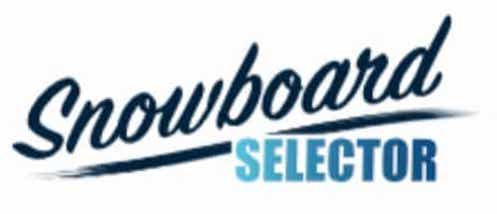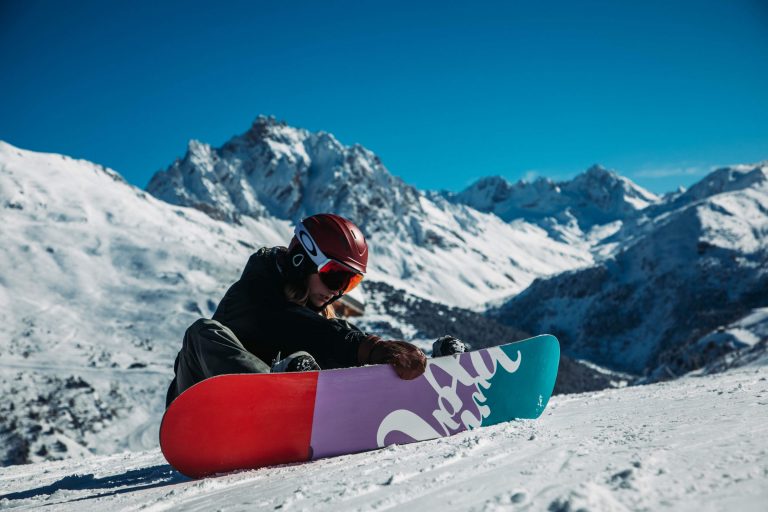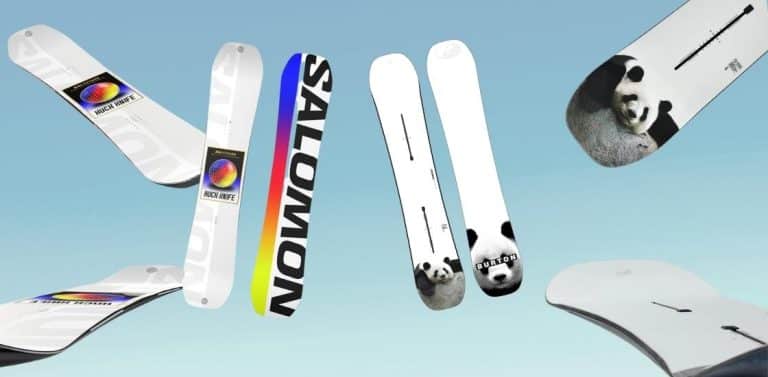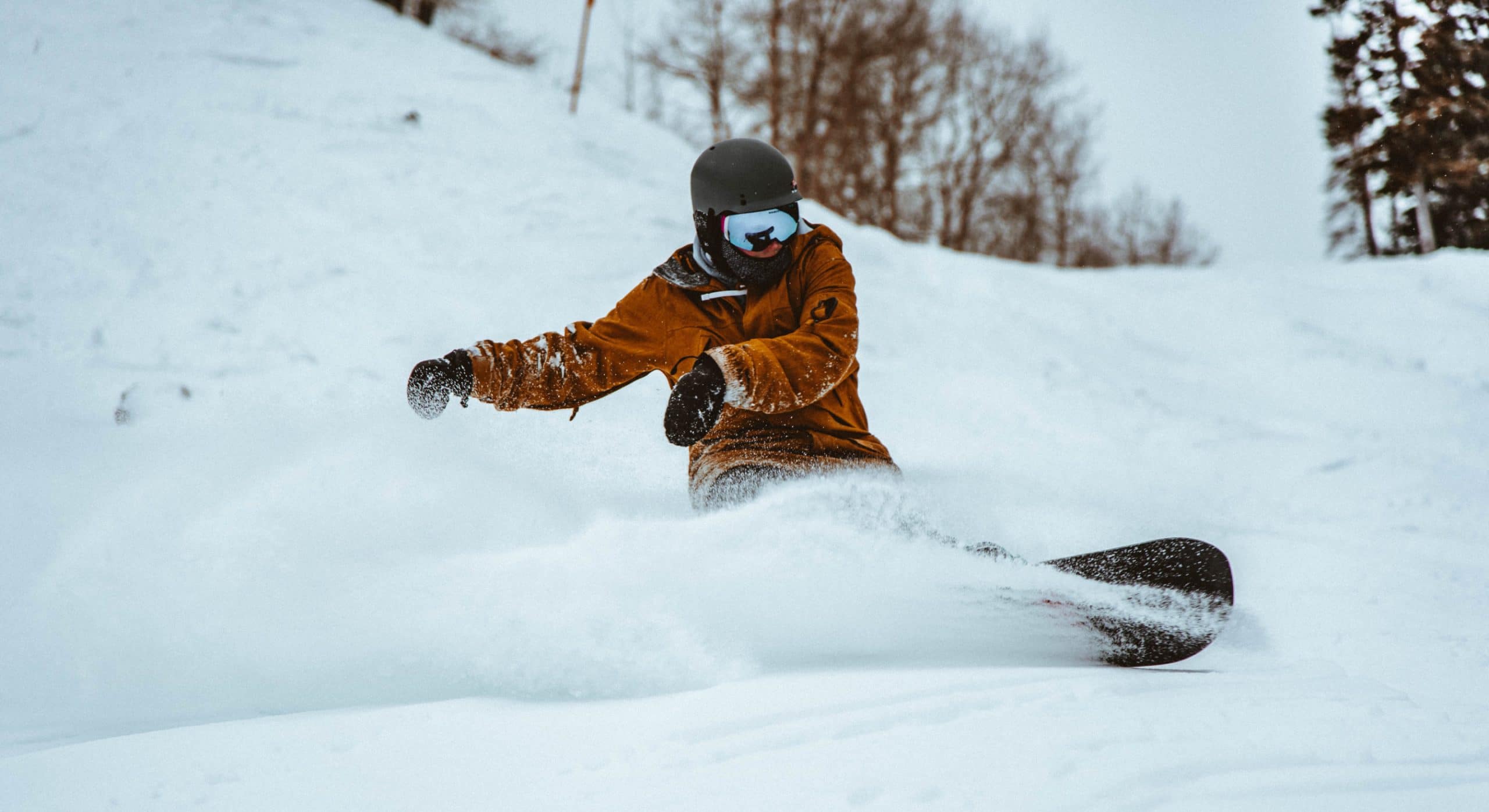Looking for some tips on the best snowboard gear for beginners from a qualified snowboard instructor?
Former tax accountant Jonathan Paul Duncan walked away from his six-figure Bay Area career to become a Level 3 snowboard instructor. After 25 seasons and 150+ days per season at Mammoth, he's got some surprising takes on gear that most riders never hear.
His biggest revelation? “Eighty percent of people probably shouldn't be on anything remotely stiff.” Duncan's “mid-flex everything” philosophy could save you from expensive gear mistakes.
Find the right sized snowboard using our Snowboard Size Calculator here.
Watch the full interview below or keep reading to discover why your gear choices might be holding you back.
From Suits to Snow…
Picture this: You're doing well in the corporate world, making good money as a tax accountant in the Bay Area, dealing with wealthy clients and their complicated finances. Life's comfortable, right? Well, not if you're Jonathan Paul Duncan. In 2018, this guy said “enough” to his stable office job and did what most of us only dream about—he took a gap year that would completely change his life.
“I used to be a tax accountant”
Duncan says with a smile that tells you everything about how he feels about that life now. He went from crunching numbers to riding powder, trading spreadsheets for snow days, and honestly? It's the kind of career change story that makes you rethink your own path.
What started as a gap year turned into a full-blown adventure across the globe. We're talking Austria, Switzerland, China, Israel, the UK, Ireland, and back to the US. Each mountain taught him something new, but it was Austria where things got serious. That's where Duncan enrolled in the Ski Instructor Academy (SIA) and started working toward his Anwärter certification—basically their version of AASI Level 2.
Finding His Flow on American Snow
Coming back to the States with his Austrian certification was cool, but Duncan quickly realized he had a problem. He knew all the textbook stuff but hadn't actually spent time teaching real people how to link turns without face-planting. Enter China Peak in California's Sierra Nevada—a perfect spot for a new instructor to cut his teeth.
During his first season there, Duncan wasn't just teaching; he was soaking up everything. He earned both his AASI Level 1 and Level 2 certifications, officially becoming legit on American mountains. But the real game-changer came when he moved to Mammoth Mountain.
If you know Mammoth, you know it's serious business. The terrain is challenging, the season is long, and it's where dedicated riders go to push their limits. It's also where Duncan earned his AASI Level 3 certification, putting him in the top tier of snowboard instructors in the country.
But something was eating at him during all this progression. For years, he'd been hearing this voice in his head saying,
“You need to be filming this stuff. Document your journey. Show people your process.”
After four years of instructing, logging over 150 days per season, and working with everyone from complete beginners to advanced riders, Duncan finally listened to that voice. That's when Snowboard Trainers was born.
Keep It Simple: The Real Teaching Philosophy
When you ask Duncan about his teaching philosophy, he doesn't give you some complicated academic answer. Instead, he keeps it real: “I think it should look good at a very simple level. When we break it down, what do people really want? They probably just want to look cool and get down the mountain safely with their friends. The bar is relatively low.”
And you know what? He's spot on. While all the certification programs focus on perfect technique and biomechanical perfection, most of us just want to cruise down the mountain without looking awkward. When you feel good on your board, you look good. When you look good, you feel even better.
Duncan's approach follows the AASI method of teaching the person in front of you, not some cookie-cutter curriculum. Everyone learns differently, and his rule for progression is simple:
“If you're falling, you haven't figured out that movement. Don't go past that yet.”
No ego, no rushing, just solid fundamentals that build on each other.
The Gear Truth: Why Mid-Flex Rules Everything
Here's where Duncan drops some serious knowledge. After 25 seasons on snow and four years of 150+ day seasons at Mammoth, he's got strong opinions about gear. His advice is beautifully simple:
“Mid-flex everything.”
Board, boots, bindings—he's talking about a 5 on the typical 1-10 flex scale. This isn't some random number. This comes from watching countless riders struggle with gear that's either too soft (limiting progression) or too stiff (making proper technique impossible).
Here's his hot take that might surprise some people: “Eighty percent of people probably shouldn't be on anything remotely stiff.” Duncan learned this lesson the hard way with a pro-model Italia board that was way too stiff for his skill level. “I'm trying to learn front boards and people are asking why I can't get my press. They're like, ‘Bro, for you to be able to muscle that board is just not there.'”
The science is straightforward. “Your physical strength, like your physical strength of your legs should mirror the flex of your snowboard,” Duncan explains. Most recreational riders just don't have the leg strength or muscle control to properly work a stiff board through its full range of motion.
Beyond flex ratings, Duncan is all about traditional camber under your feet. “Stay away from reverse camber, especially true rocker under your foot,” he warns. Traditional camber gives you stability and edge hold, which is exactly what most riders need to progress safely.
And if you're wearing size large bindings or bigger, Duncan's advice is simple: get a wide board. No questions asked. Toe and heel drag will kill your progression faster than anything.
When to Stop Renting and Start Owning
Duncan approaches the rental-to-ownership question with the same no-nonsense attitude. For beginners, start with rentals for your first few sessions. “The rental equipment is going to do a decent job to help you be successful.” This gives you time to figure out if you're actually going to stick with snowboarding before dropping serious cash.
When you're ready to buy, Duncan steers people toward newer used gear, specifically stuff from the last 3-5 years. “Anything over five years old, you're running too much risk,” he says. Technology and materials do improve, even if it's not revolutionary. This approach gives you the sweet spot between performance and price.
The Future of Learning
Duncan has a refreshingly realistic take on gear evolution. “I don't know how much gear has really changed that much,” he says. Despite marketing hype about new profiles and flex patterns, “we're not going to hovercrafts anytime soon.” Boards are lighter, faster, and more responsive, but these are improvements, not game-changers.
Where Duncan gets excited is thinking about the future of learning. Picture QR codes scattered around the mountain that trigger instructional videos. Augmented reality goggles that turn learning into a game, complete with virtual gates and scoring systems. Smart boots that give you biometric feedback. “It would be a lot more fun than it is right now,” he says.
The Bottom Line
Duncan's journey from tax accountant to Level 3 instructor isn't just an inspiring career change story—it's proof that sometimes that nagging voice in your head is actually worth listening to. His gear philosophy might seem almost too simple in an industry that loves to complicate things, but maybe that's exactly why it's so valuable.
In a world where marketing tries to convince you that you need pro-level gear to enjoy intermediate runs, Duncan cuts through the noise with advice earned through thousands of hours on the mountain: “Mid-flex everything, positive camber, get the right width for your boots.”
His biggest piece of advice? “Do your homework first. You're the person spending the money. You're the person going to be on the equipment, so you're taking all the risk.”
Duncan's building his Snowboard Trainers content across YouTube, TikTok, and Instagram, focusing on longer-form YouTube videos where you can virtually take a run with him and work on specific skills. It's the digital version of his teaching philosophy: meet people where they are, keep it simple, and remember that most of us just want to look cool and get down the mountain safely with our friends.
The takeaway? The best gear matches your actual ability, not your aspirations. The best instruction acknowledges what you really want. And sometimes the best path forward is the one that seems impossible from your current desk—even if you're sitting in a tax office, dreaming of powder days.




